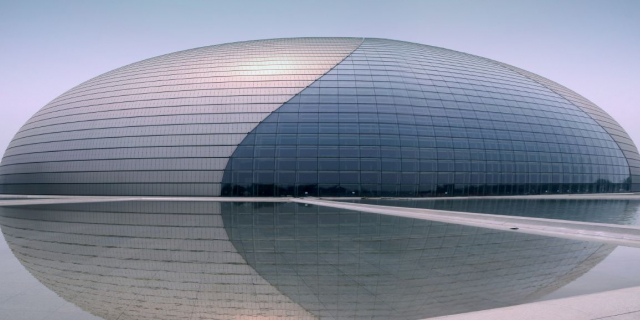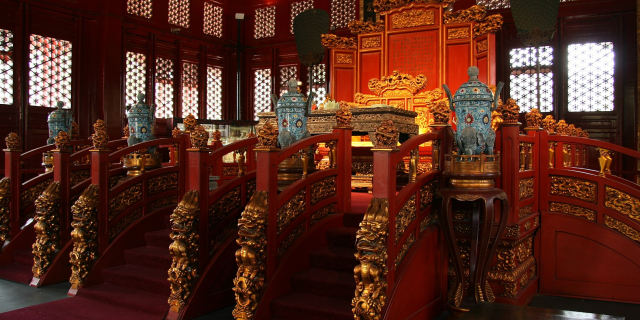The Palace of Tranquil Longevity (Chinese: 寧壽宮), literally, "peaceful old age palace", also called the Qianlong Garden, Qianlong Palace, Qianlong District or the Palace of Tranquility and Longevity, is a palace in Beijing, China, located in the northeast corner of the Inner Court of the Forbidden City.
Construction of the palace began on the Qianlong Emperor's orders in 1771, in preparation for his retirement, although the emperor himself never moved into the palace. Its beautiful apartments, pavilions, gates and gardens feature "some of the most elegant spaces at a time widely considered to be the pinnacle of Chinese interior design." Throughout the Qing dynasty, the palace was almost never used, largely because of the Qianlong Emperor's imperial decree ordering his retirement retreat remain unaltered.
In 1778, after a candidate at the imperial examination questioned the Qianlong Emperor publicly about naming a successor during an official tour in the north, the emperor, then 67 years old, announced in a court letter that "if fate would allow him to live so long, he would abdicate the throne at the age of 85 by Chinese reckoning, which would be in 1796."[1] He "reassured the Chinese people that he had secretly chosen his heir,[nb 1] and that the choice was safely written down." His decision to "withdraw into leisure" was made to avoid breaking the record of his grandfather, the Kangxi Emperor, as the longest ruling emperor of China[1] (61 years, 318 days), an important act of filial piety for the conservative Qianlong Emperor.[3]
Although he pledged to retire, and took the title of Retired Emperor after officially yielding the throne to his son (the Jiaqing Emperor) after 60 years, 124 days of rule, the Qianlong Emperor never spent a night in his Palace of Tranquil Longevity, and continued to hold on to power.[4] The Jiaqing Emperor reigned only nominally until his father's death on 7 February 1799,[5] making the Qianlong Emperor's actual reign 63 years and 122 days long.
That an imperial retirement retreat was built at all is a testament to the significance the Qianlong Emperor placed on honoring his grandfather, the Kangxi Emperor, and by extension how paramount public deference to Confucian thought and filial obligations was to the Qianlong Emperor, quite unlike the previous Manchu (non-Han) rulers that preceded him. This retirement palace was built as an important cultural and political statement, and as gesture of solidarity with Chinese social mores amid enduring anti-Qing sentiment. The details within the lavish, two-acre walled retreat further affirm the Qianlong Emperor's love and affinity for Chinese culture, and are indicative of his decorative, architectural, and landscaping tastes, as well as his intentions and goals for China.[6][3]
Despite the Qianlong Emperor never having moved into his retirement suites, they were not damaged by other inhabitants or looters in the intervening centuries; "the garden has remained virtually unchanged since its initial construction, thanks in no small measure to the emperor's decree that the site not be altered by future generations, the eighteenth-century equivalent of a landmarks preservation law."[6]
Cite error: There are <ref group=nb> tags on this page, but the references will not show without a {{reflist|group=nb}} template (see the help page).


































Add new comment